The Pearl of the Solar System: What is Saturn’s colour, really?
3rd Jul 2023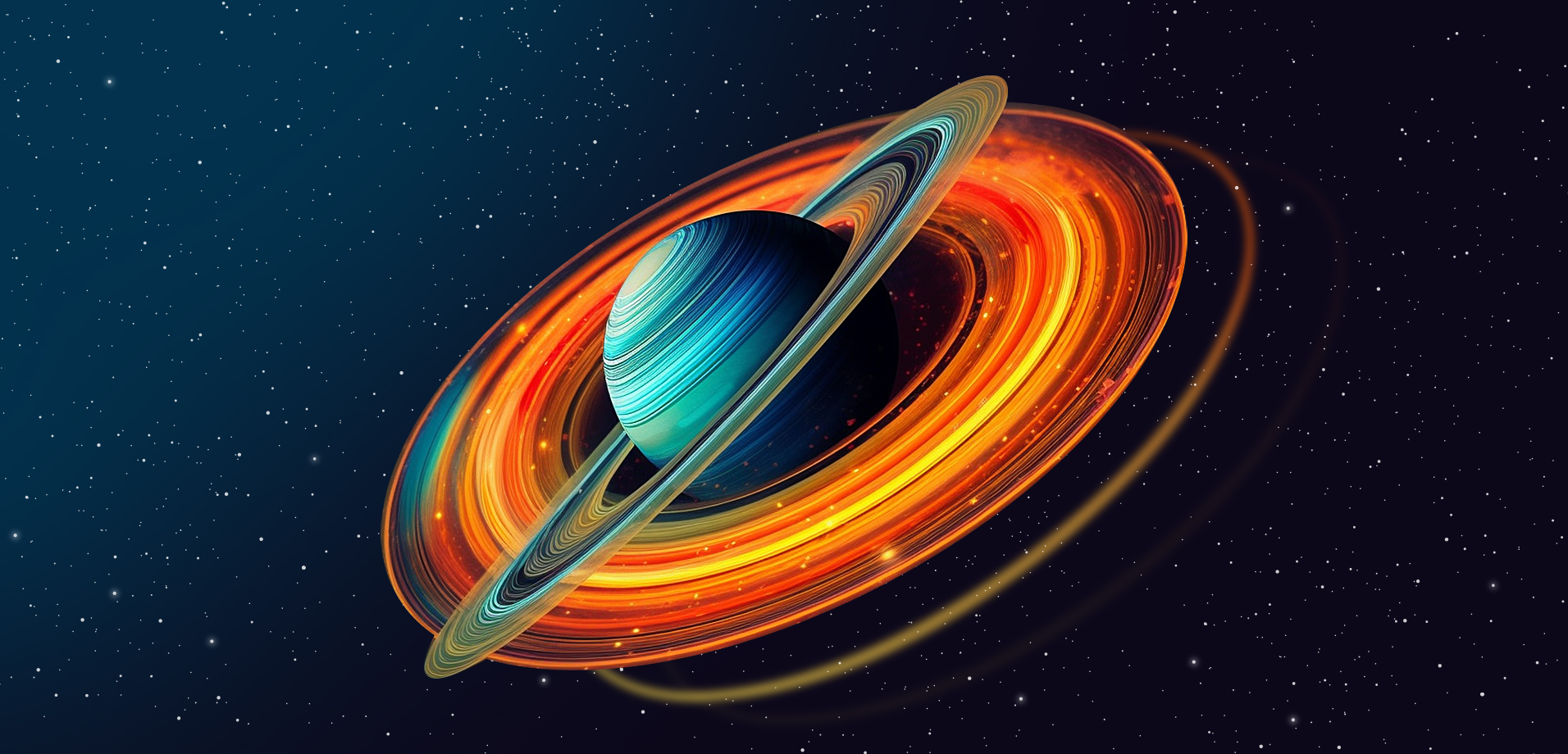
Looking at photos of the planets of the solar system, the eye clings to Saturn’s colour. The mysterious planet looks like a ringed motley pearl, but what colour is Saturn really?
What determines the colour of the planets
Before answering the question, what colour is the Saturn, you should know what determines the colour of planets and what is so special about Saturn in this regard.
Saturn is the second-largest planet in the solar system and the sixth farthest from our Sun. It stands out from the other planets with its many rings and unique Saturn colours. We know that the colour of any object is perceived by the human eye, depending on the degree of absorption and reflection of the Sun’s rays by the object. The formation of the colour perception of the planets is also influenced by the atmosphere, since the Sun’s rays are also absorbed by it and scattered on the way to the planet’s surface.
Because of the forests, oceans and soil, we perceive the Earth from space in blue, green, and dark colours. And we call Mars the Red Planet because of the particles of iron oxide on its surface. Likewise, Saturn’s colour depends on the materials in its composition, its atmosphere, and its degree of illumination by the Sun.
How do we know what Saturn’s colour is?
Saturn is about 9.5 times the size of Earth and can be seen with binoculars or even with the naked eye. It was first seen by Galileo Galilei in 1609-1610 using a telescope. However, what colour is Saturn can only be determined with the help of professional equipment. Today, scientists are observing this planet using the Hubble Astronomical Telescope. Also, the Cassini-Huygens space probe perfectly conveys the shades of Saturn and their mixing.
What is the real colour of Saturn?
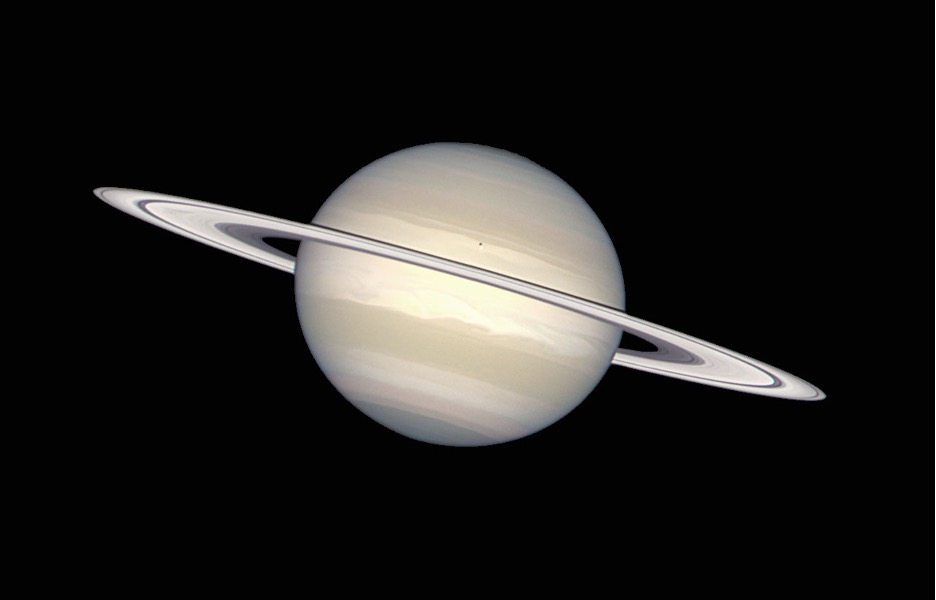
Since Saturn is a gas giant, like Jupiter, its multi-layered atmosphere is a hydrogen-helium mixture with particles of hydrocarbons, ammonia, phosphine, methane and water vapour. Because of this, we see the planet in a beige-brown colour range with the addition of yellow and grey shades. What creates such colours?
Saturn’s colour is divided into many belts arising from clouds in the atmospheric layers that contain particles of different substances. White, red, and brown spots move and fall into whirlwinds or whirlpools. The yellow colour on the surface of Saturn is due to the precipitation of ammonia crystals on reddish clouds formed by water vapour and ammonium sulphide.
Due to the foggy surface, we do not always clearly see Saturn colours, but still, we can classify the planet’s belts by shades:
- the poles are yellowish-grey;
- the equatorial zone appears greyish-brown;
- mid-latitudes are visible in yellowish-white hues.
It would seem that everything is clear and understandable, but at some point, scientists said that they see the Northern Hemisphere of Saturn not in the usual yellow but in blue. What happened then?
Is Saturn orange or blue?
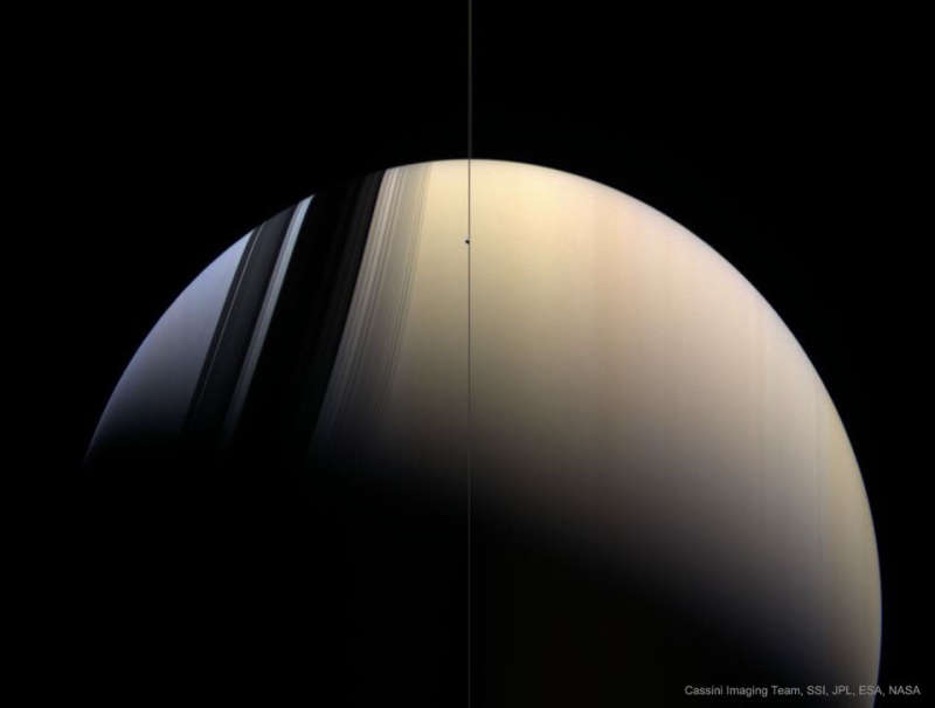
Saturn’s blue colour images were taken by the Cassini probe in 2004 at a distance of about 720 thousand km from the planet. Detailed infrared images of the bands and bright spots of the Cassini clouds using green, red, and blue spectral filters helped to gain advanced knowledge about what colour is the planet Saturn. Astronomers combined them into a colour photo, allowing us to see Saturn not only yellow-orange-brown but also blue.
Scientists explained the phenomenon by the fact that light rays in the Northern Hemisphere travel a long way, and the layers of the atmosphere in that zone do not contain clouds. Earth’s skies look blue for the same reason — molecules in the cloudless parts of the atmospheres of both planets scatter blue light better than red light. If the beam passes deep into the clouds of Saturn, the natural golden hue of these clouds prevails. But where have the clouds gone? There is no exact answer, but the low temperature in this zone may explain it. This low temperature is, in turn, caused by the shadows from the rings surrounding the planet, and so, giving the impression of dark atmospheric bands.
What makes Saturn change its colour?
Scientists suggest that Saturn changes colour due to the density and height of its clouds. The Northern Hemisphere looked blue because there were no clouds above it, or they hung too low, while the Southern Hemisphere retained its characteristic yellowish tint since the clouds were higher there. Since the Sun’s rays hit the planet differently, some areas appear brighter and others — darker. Changes in temperature, combined with winds, change the position of the clouds, making the surface more, or on the contrary, less accessible to the scattering of light waves and our observations.
The Voyager space probe confirmed that Saturn has very strong winds blowing parallel to the axial rotation from west to east at a speed of 500 meters per second, and that these winds are especially active at the equator. As it approaches the poles, the wind weakens. In addition, there are powerful storms and hurricanes on Saturn. For example, the Great White Spot seen in the Northern Hemisphere by Cassini in 2010 was also the most powerful hurricane in 2011. The spot was shaped as a vortex funnel with a diameter of about 5000 km. Such movements of air masses affect what Saturn colours we can see.
What is the colour of objects in the Saturn zone?
When discussing Saturn, one cannot fail to mention its rings and satellites because they also have their own colours, giving us a complete picture of what is the colour of the Saturn.
What colour are Saturn rings?
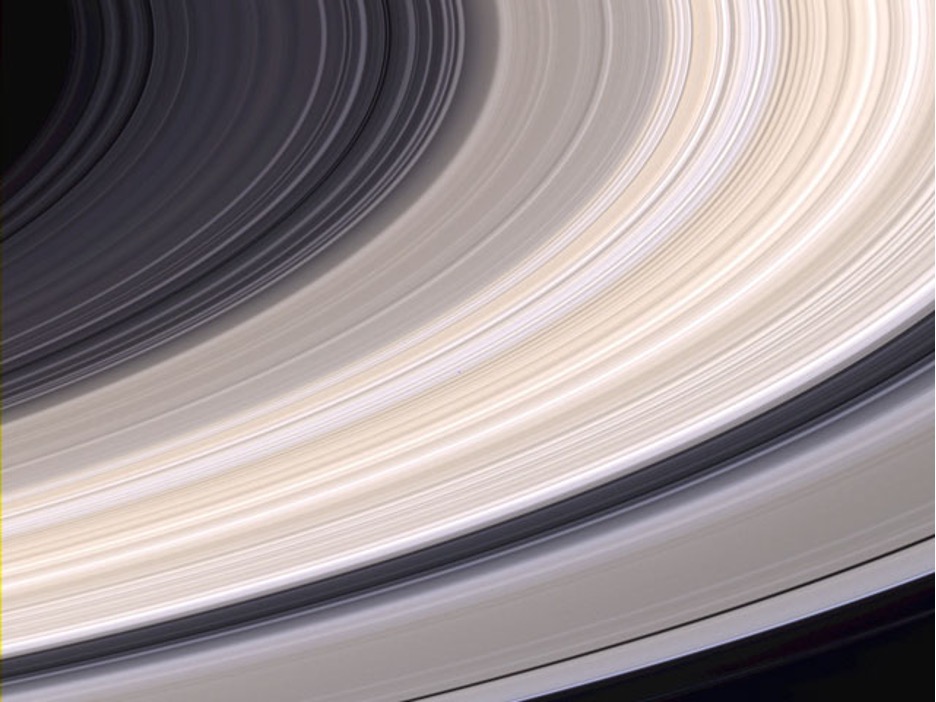
Saturn’s rings are a unique phenomenon. There are a lot of them, and they revolve around the planet in the equatorial plane, outwardly resembling a colourful vinyl record. Saturn ring colours change from grey-black inside the disc, sandy and bronze in the middle, to yellow-grey closer to the outer edge. Why is this happening?
The rings are made up of rocks, ice, water, and other particles of celestial bodies covered in cosmic dust. The light reflected by the planet and the light that hits the rings from the Sun are absorbed and reflected differently by the material of the rings, so we see them in different hues that are affected by pollution from cosmic dust particles.
What colour are Saturn’s moons?
Saturn has over 60 moons, and each has a unique colour — from the almost red Pan, closest to Saturn itself, to the almost blue moon, Epimetheus, the furthest one from the planet. Most likely, the dust of the main rings, rich in organics and iron, gives them red shades. The blue substance may be ordinary water ice, which makes up the widest and “loose” ring E, fed by icy emissions from the distant large satellite, Enceladus.
Final thoughts
Saturn’s colour, constantly changing under the influence of multiple factors and combined with its powerful rings, makes the planet not only attractive in appearance but also mysterious from a scientific point of view. No wonder, Saturn is called the pearl of the solar system. Beautiful on the outside, fierce on the inside; what could be more attractive?

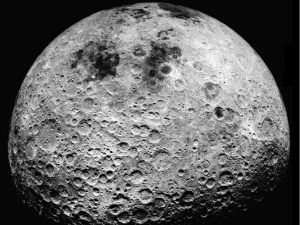


![[UPDATED] Voyager 1 Is Back In Action! – Where Is Voyager 1 Now In 2024 [UPDATED] Voyager 1 Is Back In Action! – Where Is Voyager 1 Now In 2024](https://orbitaltoday.com/wp-content/uploads/2022/06/Where-is-voyager-1-now-photo-300x169.png)

Thank you for your comment! It will be visible on the site after moderation.